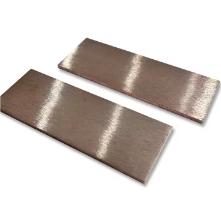**Metal Prep Magic: The Secret to Making Solder Stick Like Glue**
(How Can I Scratch A Metal Plate So The Solder Will Stick)
You’ve got a metal plate. You’ve got a soldering iron. You’re ready to fuse things together. But wait—the solder just slides off like butter on a hot pan. Frustrating, right? The problem isn’t your skills. The problem is the metal’s surface. Smooth metal and solder are like two strangers at a party. They don’t bond unless you introduce them properly. Let’s talk about scratching that metal plate. Not just any scratch, though. You need the *right* kind of roughness.
First, understand why smooth metal fights solder. Fresh metal often has a thin layer of oxidation, oil, or dirt. Even if it looks clean, it’s not “sticky” enough for solder. Scratching creates tiny grooves. These grooves give the solder something to grip, like Velcro for metals. Think of it as giving the solder a ladder to climb instead of a slippery wall.
Start by cleaning the metal. Use rubbing alcohol or a specialized metal cleaner. Wipe the surface with a lint-free cloth. This removes grease or fingerprints. Even a tiny bit of oil can ruin your soldering plans. Once it’s clean, let it dry.
Now, the scratching part. Grab sandpaper. Rough grit works best—around 120 to 220 grit. Fold the sandpaper into a small square. Rub it firmly across the area where you want the solder to stick. Move in one direction, not circles. Circles create shallow scratches. Straight lines make deeper, more consistent grooves. Scrub until the surface looks uniformly dull. Shiny spots mean smooth areas. Smooth areas mean trouble.
No sandpaper? A metal file, steel wool, or even a rough-edged knife can work. The goal is texture, not destruction. Don’t carve a trench. Just rough it up enough to remove the shine.
After scratching, clean the metal again. Scratching leaves dust or particles. These can interfere with soldering. Use alcohol again. Wipe gently. Now, the metal is prepped.
Time to solder. Heat your iron to the right temperature. Touch the tip to the metal plate. Let the heat spread for a few seconds. Apply solder to the metal, not the iron. The molten solder should flow into the scratches like water into cracks. If it beads up or rolls off, the surface isn’t rough enough. Re-scrub and try again.
Some metals are trickier. Stainless steel or aluminum might need extra help. Use a flux—a chemical that cleans the metal as you solder. Apply flux before heating. It eats away oxidation and helps the solder stick. Rosin-core solder has flux built in. For stubborn jobs, add extra flux paste.
What if scratching isn’t an option? Maybe the plate can’t be damaged. Try a phosphoric acid-based cleaner. These products etch the metal microscopically. They create a solder-friendly surface without visible scratches. Wear gloves. Follow safety instructions.
Practice makes perfect. Test your technique on scrap metal first. Adjust your scratching method. Adjust the soldering temperature. Tiny tweaks can turn a messy blob into a smooth, strong bond.
(How Can I Scratch A Metal Plate So The Solder Will Stick)
Remember, solder sticks to clean, rough surfaces. No shortcuts. Skip the prep work, and you’ll fight the solder forever. Do it right, and that metal plate will hold solder like a magnet holds paperclips.
Inquiry us
if you want to want to know more, please feel free to contact us. (nanotrun@yahoo.com)


